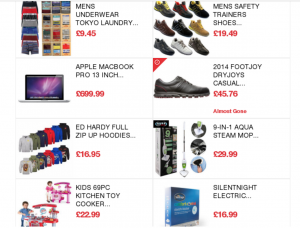Businesses are increasingly relying on new advertising platforms in order to reach their full digital marketing potential. “Social media are becoming an ever more important part of an organisation’s media mix. Accordingly, organisations are starting to manage them like traditional offline and online media” (Peters et al, 2013). But how exactly can performance of social media posts become measurable?
Social media metrics are increasingly informing future digital marketing decisions. “Marketers are constantly looking to better understand consumers and ultimately deliver an engaging experience” (eMarketer, 2016). Which social media analytical measurements are useful? Is some of the data offered simply superficial? Here we explore what metrics are out there and how businesses can gain insight for free.
Facebook offer page admins insight into their social audiences and engagement measures. Facebook Page insights provide an overview of the most important metrics, detailed information is available regarding Page likes, reach, visits, posts, videos and people. By analysing this data, marketing managers are able to understand their audience and based on the data provided, consumers can be specifically targeted with careful manipulation of content.
Facebook is where consumers go to find brands. They are looking for customer service via Facebook whilst also wanting brands to engage with them. “The two biggest values you can offer on Facebook are: entertainment and support” (KissMetrics, 2016). With that in mind, brands should be aiming to adapt their social media content through careful consideration of their online audience. This careful consideration is realistically only made viable through analytical datasets and detailed audience insights like those offered by Facebook, as well as information provided by other key social media sites.
Twitter also offer analytical data for account managers, while their information isn’t as detailed as Facebook, the information provided is still insightful and useful to marketing managers. Twitter offer information regarding tweets (amount of posts), tweet impressions (visibility), profile visits, mentions, followers and other related tweets. This analytical data allows account managers to nurture their existing audience, whilst also allowing them to increase engagement, visibility and new consumer acquisition.
Unlike most other major social media networks, Instagram doesn’t yet offer its own analytics programme. That being said brands should still try to gain analytical insight into their Insta-audience. There are a number of free online analytical tools (Simply Measured, LocoWise & Squarelovin) that offer useful information in order for marketers to truly understand their pictorial audience.
Metrics and analytical data is available directly through other popular social media sites such as Pinterest, and YouTube, whilst other platforms such as SnapChat are supported by third party analysts. There is so much data available to businesses and brands, and as long as they utilise the correct tools and techniques, return on investment is literally a few clicks away.
Social media has become much more than a marketing buzzword. It has provided a number of uniquely insightful platforms for marketers to manipulate. The more a brand focuses on the analytical details of their audience, the more they will be able to engage directly with their audiences. Social media has become a resource that is widely desirable, brands that manage their social platforms effectively can gain a digital competitive advantage.
Online consumer-brand relationships are extremely important. Marketers should be actively searching for opportunities to build upon these relationships, they must take advantage of the social platforms that are perfectly positioned to assist in building online communities, especially positive consumer generated content.
Through the utilisation of the correct analytical data, metrics and social media management tools, these consumer-brand relationships will evolve to produce higher levels of sales. By building upon these relationships brands will be able to increase consumer retention levels as well as being able to acquire new customers.
References;
Emarketer.com. (2016). How Marketers Are Measuring Customer Engagement – eMarketer. [online] Available at: http://www.emarketer.com/Article/How-Marketers-Measuring-Customer-Engagement/1013525#sthash.gQ5GKoiQ.dpuf [Accessed 10 May 2016].
Kissmetrics. (2016). How to Master Social Customer Acquisition. [online] Available at: https://blog.kissmetrics.com/master-social-customer-acquisition/ [Accessed 10 May 2016].
Peters, K., Chen, Y., Kaplan, A.M., Ognibeni, B. and Pauwels, K., 2013. Social media metrics—A framework and guidelines for managing social media. Journal of Interactive Marketing, 27(4), pp.281-298.



